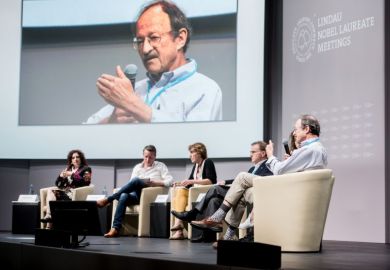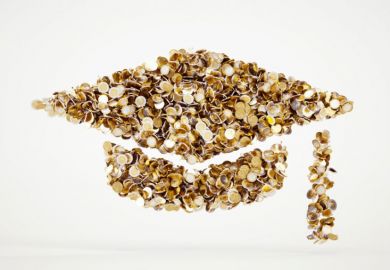Lindau is an almost unbelievably picturesque Bavarian island town that each year plays host to about 30 Nobel prizewinners and roughly 600 young scientists (the definition of “young” is “under 35”, I was pleased to hear).
These secluded get-togethers of Nobel laureates have been taking place since 1951, but the emphasis these days is on passing along career advice and the latest scientific thinking to the next generation.
Yet despite this most tranquil of locations, which looks out across Lake Constance to the Austrian and Swiss Alps, the mood among the young scientists I chatted to in conference halls and beer gardens during the week was not exactly placid.
Many appreciated the Nobel prizewinners’ counsel – you often saw young scholars huddled around a laureate holding forth about his or her career – but some also seemed slightly mutinous, a touch annoyed that this relaxed, garlanded older generation of academics do not quite appreciate what early career researchers are now up against.
The pressure on young scientists to publish in the “right” journals came up again and again in conversation. In particular, the need to get a high average journal impact factor (JIF) hangs like a cloud over the careers of many I met.
One oncology PhD student told me that he had resolved to go into industry, where there were at least definite problems to be solved, rather than stay in academia, which had become a mere publishing game. Young researchers hate the journal impact factor, he lamented, but feel powerless to overthrow it.
It’s all very well Nobel laureates taking the high ground now and refusing to publish in a career-making journal such as Nature, he said, but early career researchers have to play the game if they want even the chance of a career.
Complaints about the JIF are not new, and there have been several attempts to bury it as a way of measuring the quality of research. But to judge by what I heard at Lindau, these have not been successful.
I met one PhD student at a very high-profile university who needed to publish three papers in journals with at least a certain JIF to graduate. He still wanted to continue in academia, but his idealism had been ground down.
To recap, the JIF is a measure of the average number of citations that articles in a particular journal attract over a set period of time. Because it is a mean average, not a median, it can be incredibly distorted by outlying papers. Using it to assess a researcher’s quality is almost as absurd as judging my worth as a journalist on how many clicks my colleagues’ stories get. Not once while covering research for Times Higher Education can I recall speaking to anyone who would defend it intellectually.
I do not want to give the impression that all the young scientists at Lindau were disillusioned; very far from it. One I met had been inspired to try a new experiment when she returned to her lab. It was also striking how many told me that communicating their work to the public was one of the best parts of their job.
Yet mirroring wider tensions between millennials and baby boomers, the sense was pervasive that they had been bequeathed a scientific system by their elders that did an awful lot to stop them doing proper science.
Register to continue
Why register?
- Registration is free and only takes a moment
- Once registered, you can read 3 articles a month
- Sign up for our newsletter
Subscribe
Or subscribe for unlimited access to:
- Unlimited access to news, views, insights & reviews
- Digital editions
- Digital access to THE’s university and college rankings analysis
Already registered or a current subscriber?








